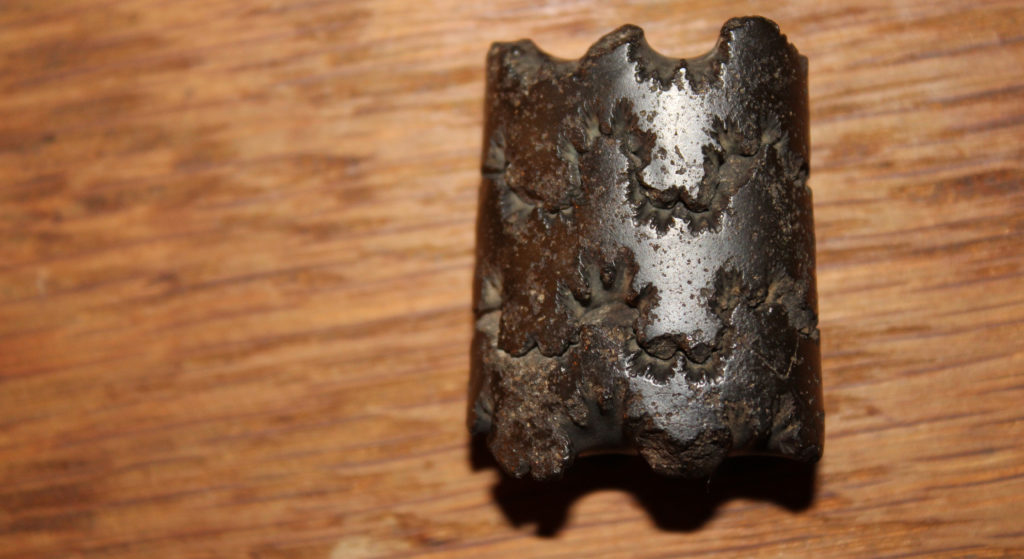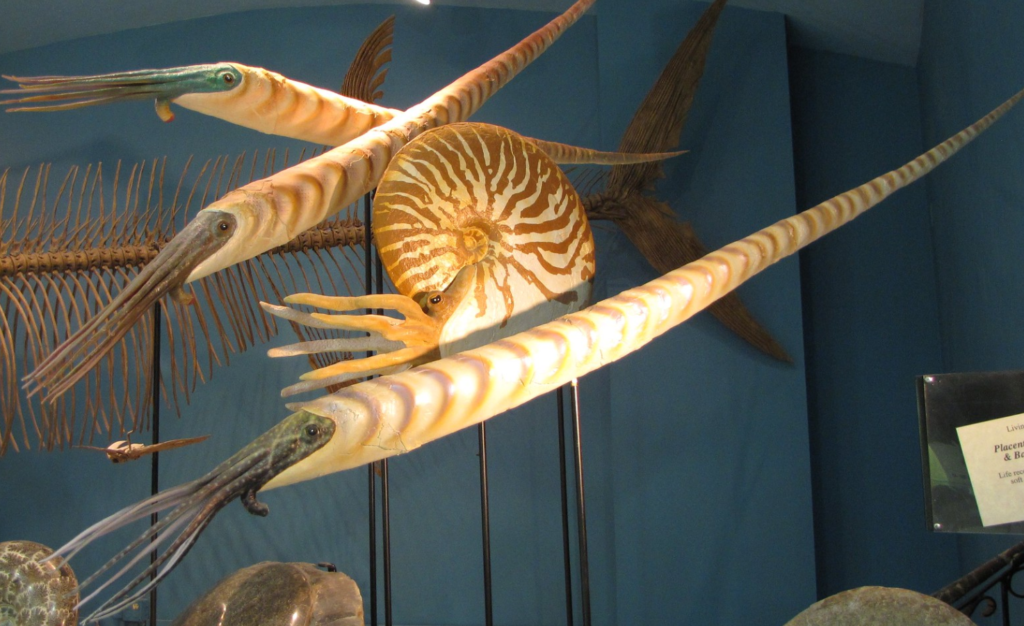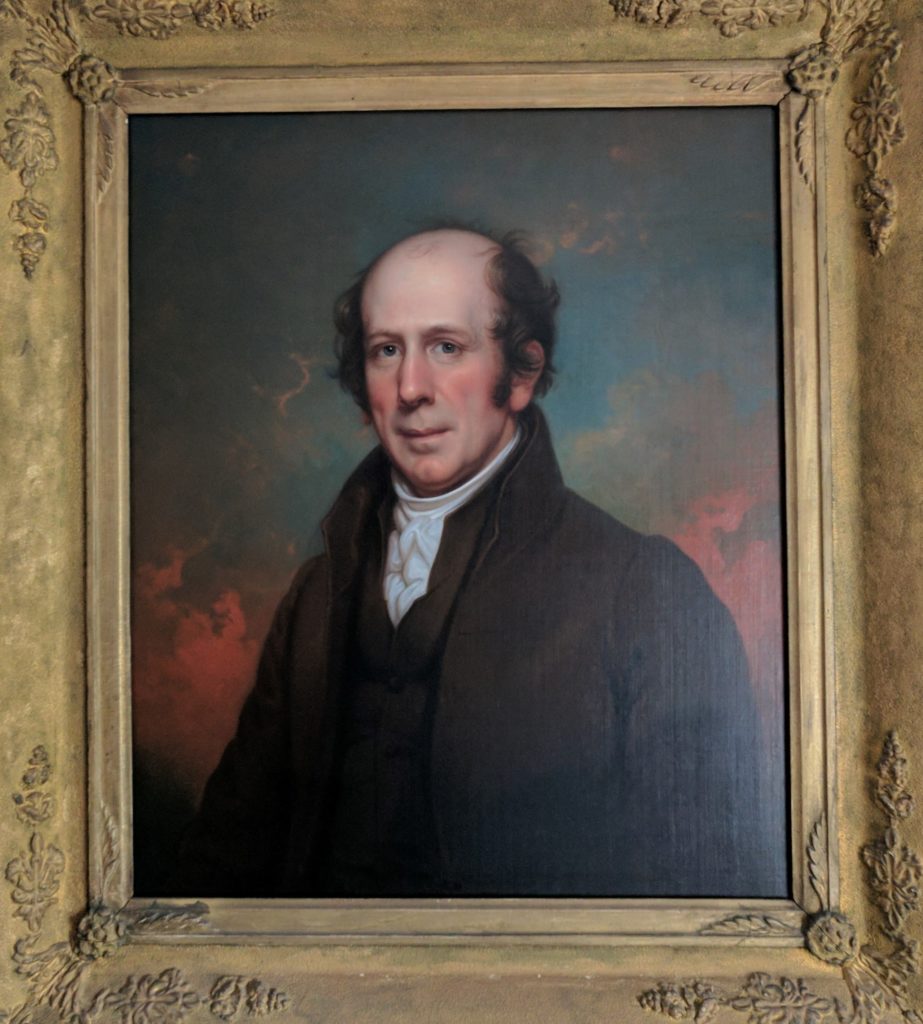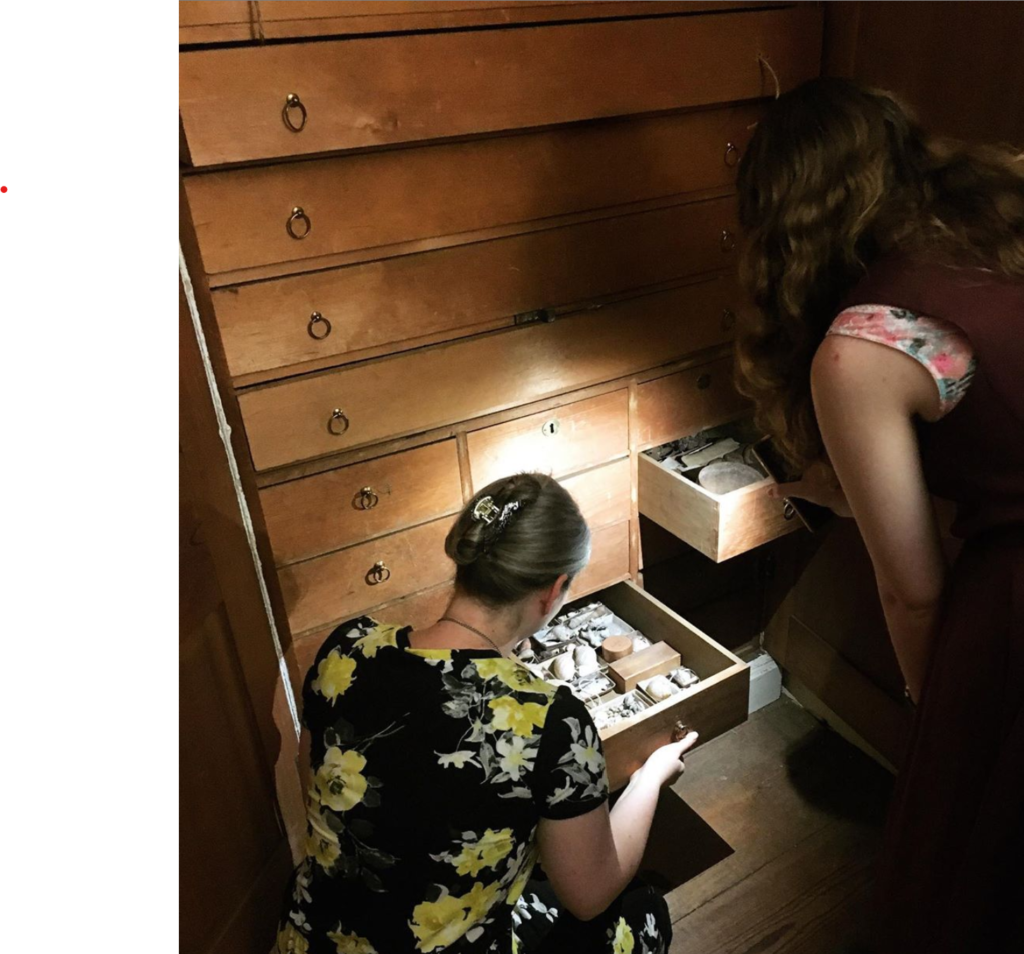“It was gone. It was missing, missing, missing. . . it was 180 years since anybody had looked at [the fossil] and known what it was.”
-Matthew Halley, previous Wyck caretaker
The holotype specimen was lost, thought to be destroyed, until Wyck caretaker Matthew Halley re-discovered the Baculites ovatus (a squid fossil) in a drawer of various natural specimens in Wyck’s 200 year old cabinet of curiosities. In Wyck’s very first podcast episode, “The Holotype Specimen,” Matt Halley shares how he came to reconnect with Wyck’s history and the history of early 19th century naturalists in Philadelphia, to make this important find.

Above: Baculites ovatus holotype photographed by Matthew Halley.
The fossil we explore in this episode is of the species Baculites ovatus. It was a shallow-sea dwelling squid that lived about 65 million years ago during the cretaceous period. The fossil was unearthed in the mid-18th century and lived in the pocket of its finder for 30 years before the owner passed it on to his friend, 6th generation Wyck resident, Reuben Haines III (1786 – 1831).

Above: Bacculites and Ammonite reconstruction at the Black Hills Institute of Geological Research. Photo by Chante Etan.
At the time, Reuben was the corresponding secretary for the Academy of Natural Sciences and an ardent naturalist. His friend Thomas Say was the librarian for the Academy of Natural Sciences, the curator at the American Philosophical Society, and a professor of natural history at the University of Pennsylvania. Say came to Wyck to document the newly discovered specimen. Drawing it for the first time, this small fossil became the holotype specimen of the species Baculites ovatus. In case you don’t know (I didn’t!), a holotype is a single physical example of an organism, known to have been used when the species was formally described.
Below: Painting of Reuben Haines III by Rembrandt Peale, ca. 1831 from the Wyck Collection.

Reuben placed the fossil among his specimens in a tall wooden cabinet in his second-floor museum room at Wyck. He and Say continued in their other various natural history pursuits. In 1831, Reuben died suddenly at the age of 45 and the memory of the location of the fossil dissipated soon after.
For nearly two centuries the holotype specimen was lost and then a very scientifically minded caretaker took up residence for a second time in 2017. Matt Halley was not convinced the fossil was lost. Living just down the hall from the museum room, he delved into the world of Reuben Haines III, a world of heroic exploration, collection, and categorization of the wilderness. For the full story, tune in to the podcast at messy.fm/curiosity.
Below: Researchers explore the curiosity cabinet at Wyck.

Click here to listen to the full podcast episode on the Holotype Specimen.
The Curiosity Cabinet, a podcast all about the objects of Wyck
Historical objects can reveal so much about our shared past and help us recall some fascinating (and occasionally bizarre) stories. Tune in on the second Saturday of each month to learn about specific artifacts from the collections of Wyck Historic House, Garden, and Farm in Germantown, Philadelphia – home to a 200 year old cabinet of curiosities. Wyck was home to 9 generations of one family (1690 – 1973) and is still home to their accumulation of over 10,000 material culture artifacts. Whether you are a history nerd, a material culture enthusiast, or a story-teller/appreciator, this is the show for you.
